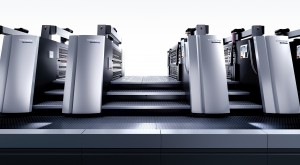3 Reasons Why Offset Litho Is Ideal for Plastic Card Printing
Certain aspects of the printing industry have undergone major changes in the three decades since I started my career. Today, you have many commercial printing options: traditional offset litho, surface printing, silk screening, thermal printing and digital (direct-to-plate) printing.
However, in my experience, business pros – such as those in marketing, sales, public relations and others – may frequently use commercial printers but don’t necessarily know how different types of printing equipment and machinery work. Understanding these processes can help you choose the method that will deliver the highest quality at the best price for your project, especially when it comes to plastic card printing.
In this blog post, I will explain offset printing and why it works so well with plastic cards (and other materials like paper and cardboard, of course). Next week, I will compare offset printing with other techniques you can use, depending on the quantity and quality you want and the timeline of your project.

Offset Litho Defined
Over the past 30 years, I’ve been asked this question many, many times: “What is offset lithography printing?” In a nutshell, offset litho is the process of transferring – or offsetting – an image from a plate to a rubber roller (called a blanket cylinder) to some form of substrate (plastic, paper, cardboard, etc.) in sheet format. It was perfected in the mid-1800s and hasn’t really changed much since.
Advantages of Offset Printing for Plastic Cards
There are three main benefits to offset printing:
1. Dynamic Range of Color
With offset printing, you can achieve an amazing range of colors using the four-color CMYK inks – cyan (blue), magenta (red), yellow, and black (the K). If you can imagine it, an offset printer can usually create it.
2. Higher Line Frequency
The line frequency directly correlates to the amount of detail you will see in a printed picture. With offset printing, images are reproduced by printing lines of halftone dots, commonly measured in lines per inch (LPI). Screen printing usually starts at 35 LPI, and a 300-600 DPI (dots per inch) laser printer equates to 50-65 LPI. Conversely, high-end offset for magazines, for example, can exceed 300 LPI. Generally, plastic card printing ranges from 133 to 175 LPI.
3. Production Speed
Offset litho is fast and is perfect for bigger runs (1,500 plastic cards or more per order). Although it’s not as flexible as other forms of printing, it certainly is an ideal solution for longer runs from a price perspective.
At Plastek Cards, we use three Heidelberg offset presses to print millions of plastic cards each year. Their quality and dependability have been proven over and over. If you’re thinking about ordering plastic cards, no matter how many or how few, make sure you check into offset printing. It’s still your best option for most printing projects.
Image Credit: Heidelberg USA


